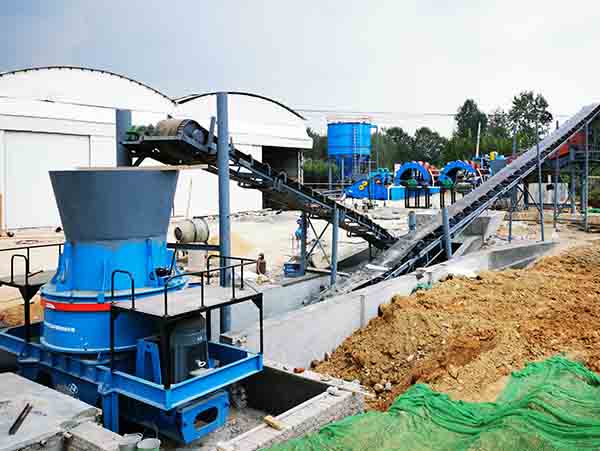Product Knowledge
500t/h Limestone Crushing Production Line
author:dahua2 time:2023-05-18
The limestone crushing production lines are very common in the crushing and sand making industry, with an hourly output ranging from 100t to thousands of tons. Limestone is often used as a building material and important raw material for many industries. This article takes the 500t/h limestone aggregate line as an example to introduce the equipment selection, process flow, production line layout, dust treatment, and other details of the sand and gravel aggregate line for reference.
Equipment selection
Three commonly used crushers suitable for limestone:
1. Jaw crusher+impact crusher+circular vibrating screen+sand washing machine
2. Jaw crusher+cone crusher+sand making machine+circular vibrating screen+sand washing machine
3. Jaw crusher+impact crusher+circular vibrating screen+sand washing machine
Taking the limestone mine of a cement plant as an example, the design production line has a processing capacity of 500t/h. In addition to soil 10%, the finished products are 20-31.5mm, 18%; 10-20mm, 25%; 5-10mm, 17%; 0-5mm, 25%. Considering the rock characteristics and product ratio requirements, a two-stage crushing scheme is selected, the combined form of jaw crusher + impact crusher. The main features of this combination are good product size, low stone powder content, low total investment, low energy consumption, low maintenance and operating costs, and low noise and dust impact on the environment.
The primary crusher is a jaw crusher with a processing capacity of 500t/h (discharge port is 200mm), with an installed power of 220kW.
The secondary crushers are two impact crushers with a processing capacity of 200-250t/h (when the discharge port is 40mm), with a single installed power of 200kW.
Screening adopts secondary screening, with 2 sets of 3YA3075 circular vibrating screens for primary screening, and 1 sets of 2YA3075 circular vibrating screens for secondary screening.
Limestone production line working process
1. The primary aggregate crushed and transported.
2. Aggregate screening and transportation.
3. The secondary aggregate crushed and transported.
4. The secondary aggregate screening and transportation.
5. The aggregate washing and impurities removed.
6. Finished product storage.
Previous Article:No Information
Next Article: What is the difference between jaw crusher and hammer crusher?







